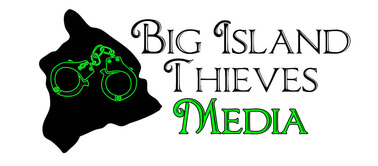By day, they hold a wide range of conservation jobs with the DLNR Division of Forestry and Wildlife (DOFAW). By night, or anytime a wildfire breaks out or spreads to State forests, some of the approximately 140 DOFAW employees statewide subject to fire call-out grab their gear and firefighting apparatus and head out.
Most of the time Ryan Peralta is a DOFAW Forest Management Supervisor but he has decades of experience battling wildfires. Many times, he is the incident commander on the scene, directing crews and equipment to hot spots and flare-ups.
“The people who work for DOFAW want to be in the forest and working with wildlife. Instead of planting trees we may be putting out a fire. Instead of releasing game birds, we may be fighting fires. We like it, but it is sad to see the damage fires do to the forest and watershed,” Peralta said.
Over the Thanksgiving holiday weekend, as many as twenty DOFAW firefighters were helping bring a fire under control in Kalihi, which had spread into the Honolulu Forest Reserve.
The tools of their trade include shovels, portable and truck-mounted water tanks, Pulaski’s, helicopters and a ton of common sense and training in how to safely fight the flames.
Peralta cites the Chapter 185 land-fire law, which makes the DOFAW firefighters the first and primary responders for fires in all forest reserves, natural area reserves, wildlife sanctuaries and any lands under the jurisdiction of the division.
Mike Walker is the State Protection Forester who is responsible for the management and administration of the DOFAW fire team. He expanded on the training staffers need. “At a minimum they need to be trained in basic wildland firefighting by passing two courses from the National Wildfire Coordinating Group, which sets the standards nationwide for wildfire training. Many of our staff are also trained in helicopter operations, as well having other specialized and leadership training,” Walker explained.
Firefighting – no matter what kind – structure or wildland, is physically demanding, dirty, smokey, and at times, dangerous work. This is why safety is always the key consideration and firefighter training focuses greatly on how to work safely.
One of the major differences between municipal fire departments and the wildland fire team, as Peralta points out, is structure fires are typically much shorter in duration. A forest fire can burn for days or even weeks. “It is tough work. Long hours and a lot of physical, hard labor and a lot of looking at the same person constantly until the fire is out. We go everyday until the fire is out. The principles are the same, put the wet stuff on the red stuff, just be careful and do what you got to do,” Peralta commented.
The Kalihi area blaze, called the Kahauiki Last Char fire burned an estimated 50 acres. Not large by mainland standards, but as a percentage of total land mass, Hawai‘i loses as much acreage to wildfires each year as most western states. Climate change experts predict in the coming decades the world will see higher frequencies of wildfires and more ferocious ones.
In Hawai‘i, like most other places, there is no longer a fire season. Now, fires can and do start every month of the year here and elsewhere. Most of the fires the DOFAW team fights are as the result of unattended campfires out in the forest. This latest fire is more unusual in that it burned in what’s called the wildland-urban interface, called WUI in the firefighting community.
“It started above apartments, topped the ridge, and was beginning to slop over an access road on the other side and could have reached hundreds of homes at Ft. Shafter. For fires in the WUI we do play a role in protecting structures and of course lives,” said Jason Misaki, the Kahauiki Last Char fire incident commander.
His “regular job” is the DOFAW O‘ahu Branch Wildlife Program Manager. “It’s football season. I watch a lot of football, but if we get a call on a Sunday, it’s let’s go…let’s get out there and get to work. Everybody comes together and everybody is enthusiastic and passionate about doing the job. It’s game day every time,” Misaki said.

